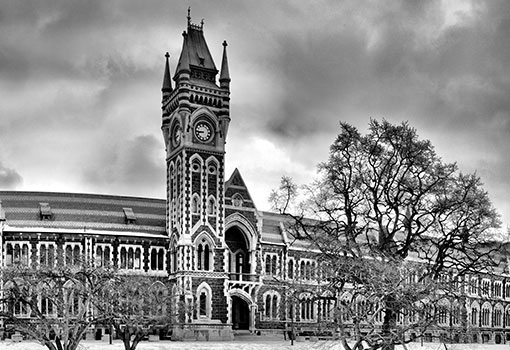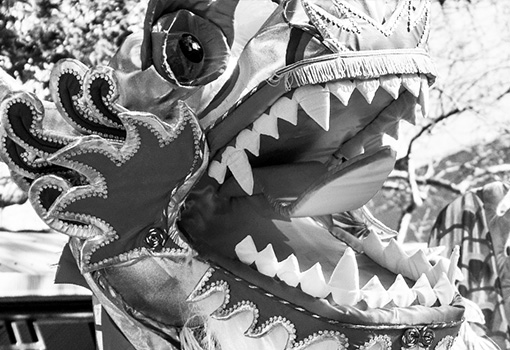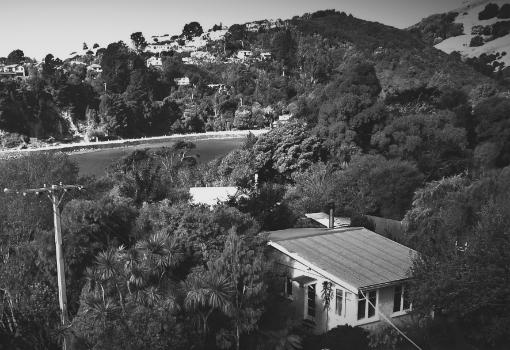
A life in letters
By ODT - Gavin Bertram | Posted: Monday Mar 03, 2025
A life in letters | Otago Daily Times Online News
In recent months Dunedin’s Neville Peat has received major recognition for half a century of writing about the southern environment.
A.H. Reed would stride up the steps two at a time on his visits to the noisy Evening Star newsroom.
In his 90s by then, the venerable Dunedin writer and publisher impressed Neville Peat, a young reporter at the newspaper in the late 1960s.
“I was always amazed to see him and hear about his wanderings across New Zealand,” he recalls.
Reed’s books about his epic walks around New Zealand would be part of the canon that inspired Peat’s own work later.
The Broad Bay writer has been documenting the natural world, people, and places of the south and beyond for almost half a century.
With around 50 books to his name, Peat is among this country’s preeminent authors.
There has been much recognition over the decades for Peat’s work, including the Michael King Writers’ Fellowship in 2007, and an MNZM in 2018.
Recent months have brought two more major accolades. In mid-December he was one of three recipients of the 2024 Prime Minister’s Award for Literary Achievement, while in January he received the New Zealand Antarctic Society’s Conservation Award.
Both recognised Peat’s lifetime of work drawing attention to the natural environment and the impact made by humans on it. The awards are important to the writer for a number of reasons.
“I was pleased for the sake of Dunedin’s status as a UNESCO International City of Literature,” he notes. “But also, I was pleasantly surprised that Dunedin would be seen as a place where you could write on nature conservation and environmental works and win a national prize.”
For although Peat has travelled widely and lived in other countries, it’s the city that he grew up in that he remains dedicated to.
As well as forging a literary career here, he’s served on both the Otago Regional Council and Dunedin City Council, and been involved in various other interests.
That includes being the patron of an event that borrowed the title of one of his books - the Wild Dunedin New Zealand Festival of Nature that’s on in April.
Born just after World War Two, Peat grew up in Mosgiel, where his father owned a bicycle shop.
The family didn’t have a car, and so he wasn’t able to explore the Otago region until he bought his own at the age of 18.
By that time Peat was working at the Evening Star, with a burgeoning interest in feature journalism. Many of his peers followed the well-worn route to the UK, but when he got itchy feet he decided to tread a different path, working at the Cape Argus newspaper in South Africa.
“I was writing the shipping news, and developing a strong interest in ships and the sea,” Peat details. “But after two years I’d had enough of the apartheid system and didn’t want to live there anymore.”
South America beckoned, and with some journalist friends he toured much of the continent over six months.
Returning to Dunedin and the Evening Star after that experience, the thrill of adventure remained in his blood and he was drawn away again in 1974.
This time it was to the shores of Tonga, where Peat had envisaged himself just lying on the beach.
“I’d become aware that we lived in the Polynesian archipelago, and had a huge range of things to be investigated,” he reflects. “So I thought I’d start off by going to Tonga, and then discovered the place had a weekly newspaper which was the second most read publication after the Bible.”
He worked for the Tonga Chronicle on a year-long Volunteer Service Abroad assignment. It was a fascinating period for the writer, especially accompanying the King on his annual royal agricultural tour of the islands. So much so that Peat is currently working on a memoir of his time in the Kingdom.
But in 1975 he swapped the tropics for the ice when he became a publicist for the Antarctic Division of the then DSIR.
Some lengthy stints at Scott Base paved the way for Peat’s transition from newspaper journalism to writing books.
Halfway down Otago Peninsula, Yellow Head is a peaceful spot where the historic Broad Bay Cemetery can be found.
Peat and his wife Mary have called it home since 1990, and their daughter and family now also live nearby.
Upstairs in Peat’s office there’s a superb view over the calm waters of Turnbulls Bay.
Near his desk are volumes by Philip Temple, James K Baxter, and others who have helped form our understanding of this land. A steady stream of books have emerged from this space.
The seasons Peat spent at Scott Base led to his first books, 1977’s Ice on my Palette and 1978’s Snow Dogs. The first was a collaboration with artist Maurice Conly, the other told the story of the huskies that served on the ice.
Then in the early 1980s came a book that took its inspiration from John Steinbeck’s Travels with Charley, a story of the author’s road trip with his dog, published in 1962.
Detours was Peat’s equivalent, wherein he traversed small town New Zealand, meeting the locals along the way.
“I took a 10-speed Peugeot bike which I called Blue,” he says. “It became a centrepiece for how I could introduce myself to people in small towns. Some of them thought I was lost because it was such an early time for travelling from Cape Reinga to Stewart Island by bicycle.”
That Blue is now on display at Toitū Otago Settlers Museum makes the bike’s donor particularly proud.
For eight years Peat worked in a busy role as a publicist for the Ministry of Foreign Affairs External Aid Division, before pursuing full time writing in 1986.
After Detours he could see that there were different ways to approach stories, and he’s flexed that creative muscle many times over the decades since.
While his output is too prolific to list, highlights include 1987’s Flight From Afghanistan, 2011’s Seabird Genius: The Story of L.E. Richdale, the four volume Wild collection, the creative non-fiction of the Lark trilogy, and the Sir Tim Wallis biography Hurricane Tim.
More recent books like 2007’s The Tasman: Biography of an Ocean and 2012’s Shackleton’s Whisky have gained international attention.
The Tasman was the product of the lucrative Michael King Writers’ Fellowship, while Shackleton’s Whisky arrived through serendipity.
Telling the story of the whisky taken to Antarctica on Ernest Shackleton’s Nimrod expedition in 1907, it was an example of “how luck can bring you treasures”. With perfect timing, another book called Antarctic Partners had taken Peat back to the ice in 2007.
“I had a one hour opportunity to go with a helicopter to Cape Royds, and I was able to go to Shackleton’s Hut,” Peat relates. “And lo and behold, I heard there was a discovery of whisky under the floorboards. So the whole thing suddenly clicked into place.”
The book covered the whisky’s history, and its rediscovery a century after Shackleton’s expedition. But there was also the story of its modern recreation by Scottish master blender Richard Paterson.
Shackleton’s Whisky was ‘book of the week’ in the UK’s Daily Mail, and was published in various territories - including, strangely, a Bulgarian translation.
Good timing plays a role in a successful publishing career, but often writers create their own luck.
That’s certainly been the case for Peat, who’s always had his ear to the wind for potential stories.
“I’ve described it as keeping a radar turning slowly on the opportunities,” he reflects. “If you can pick up on them, you just go with your feeling and confidence to pull it off. I’ve had the lucky breaks, from winning awards, but also just being there at the right time.”
Now working on his Tongan memoirs 50 years after his experiences there, the 77-year-old still has plenty of ideas bubbling away.
Away from writing, Peat still enjoys travelling a bit, but having been diagnosed with Parkinson’s Disease three years ago, he has slowed down.
“No cure and no causes have been found yet, but they’re getting there,” he says. “And I may live long enough to see them. I hope so.”
Wild Dunedin New Zealand Festival of Nature: Various locations, April 10-22.



